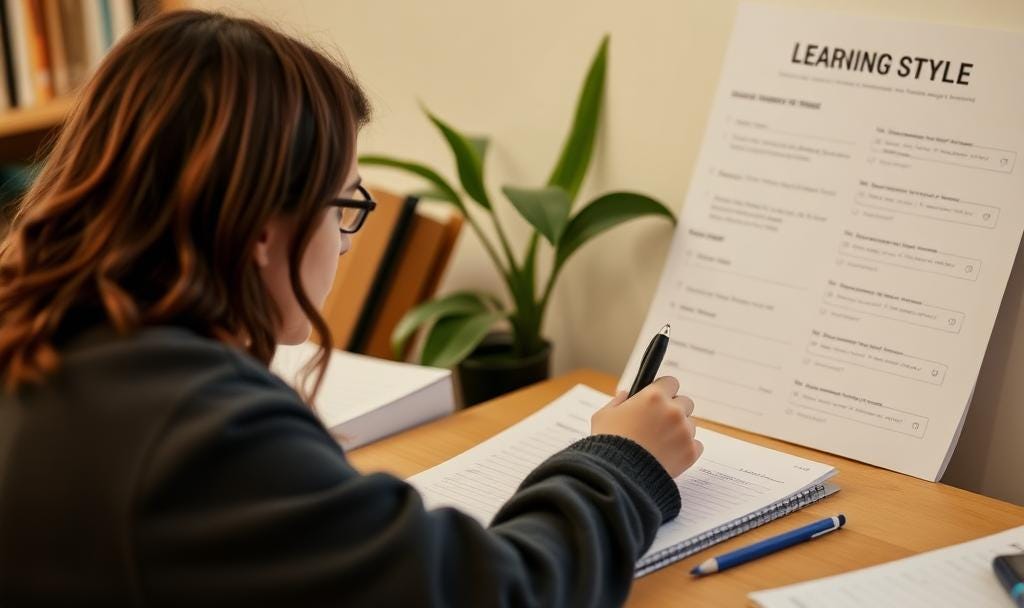Does Adjusting to a Student’s Learning Style Help or Hinder Learning?
Learning using a variety of methods, not catering to one style, is probably best
by Jaclyn Evans, PharmD, MS, MS, PGY1 Pharmacy Practice Resident, Magnolia Regional Health Center
Learning style is a term used to describe the way in which a person obtains, processes, and retains information. Learning styles are also known as “learning preferences.” Since the phrase “learning style” was first coined, many researchers have attempted to determine what factors positively affect and serve as the motivation for a student’s learning. Three of the most well-known researchers on this subject are Howard Gardner, Neil Fleming, and David Kolb. 1 These researchers have tried to answer this popular question: “Should teachers adjust their teaching methods to accommodate individual students’ learning styles?”
As both a former student and former graduate assistant instructor, I have experienced “both sides of the coin.” As a student, I wanted teachers to present the instructional material in such a way that was easiest for me to process and retain; but, on the flip side, as a teacher, it would be very challenging to effectively teach each student in a large classroom catering to their preferences with limited time, resources, and funding. Do the scientific studies support the proposition that teachers should adjust their teaching methods to accommodate students’ individual learning styles, or do the studies refute this notion?
The American psychologist Howard Gardner believed that people have different ways of learning and have different intellectual means. Gardner espoused the theory of “multiple intelligences.” 2 The educational theorist Neil Fleming is synonymous with the VARK learning style model. The VARK learning style model stands for: Visual, Auditory, Read/Write, and Kinesthetic. Many students and teachers are familiar with the VARK learning style model and can tell you their preferred style for receiving information. Lastly, the educational psychologist David Kolb approached the concept of individual learning styles from a different angle. Kolb believed that an individual’s understanding of the world was created from individual experiences. Kolb’s belief in the relationship between knowledge and experiences was the basis for his theory, known as the Experiential Learning Cycle. He subsequently developed Kolbs Learning Style Inventory and described four different types of learners: divergers, convergers, accommodators, and assimilators. 1
What Does the Evidence Show?
The concept of whether educators should cater to different learning styles in their classrooms has been a topic of debate for many years now. The concept is intuitive and appealing, but evidence is needed to prove whether teachers should adjust to their students’ preferences. Many studies have been conducted, and the majority have arrived at a similar conclusion: adapting to individual students’ learning styles does NOT improve the students’ learning efficacy.
In one study3, researchers investigated whether using learning styles or academic abilities as the basis for differentiating the instruction improved the performances of A-level students. Ten males and eighteen females, ages 17-19 years old, participated. The students were given a pre-test related to a topic. This provided information about their academic abilities. Next, participants were given two learning styles questionnaires, Honey and Mumford’s Learning Styles Questionnaire and Gardner’s Multiple Intelligences, to determine their learning styles and preferences. Next, the students were taught nine lessons. The lessons were designed to differentiate the instruction based on either learning style or aptitude on the topic. The students in both groups spent the same amount of time on the lessons and received the same lessons; it was only the method of delivery that varied. The results showed that the group whose method of differentiation was based on prior academic performance scored higher on the post-test than the group of participants whose method was based on learning style. When asked to rate activities and learning styles used in each condition, the majority of students in both groups felt that learning styles were best “as a variation with other techniques” but that learning style should not be the main tool used in the classroom.3
Potential Pros
According to the book Learning Styles: What Research Says to the Teacher Series (Reiff, 1992), there are some advantages to using individualized learning styles within the classroom. Catering to student learning styles could potentially reduce frustration for both teachers and students. It might improve a student’s self-concept and achievement and assist the teacher in better planning for instruction. Moreover, adjusting to learning styles increases flexibility and communication.
Potential Cons
The cons to adapting to students’ learning styles, however, likely outweigh the pros. The lack of scientific evidence to support its use is a big one! If it won’t improve learning outcomes, why put forth the time and effort? Students learn using all learning styles, not just their “preferred” one. If teachers adjust their instruction to cater to a specific style, the student is forced to concentrate on one specific learning method and doesn’t develop the skill of learning in other ways. Also, some for-profit companies have used the theory of “learning styles” to promote their products to schools, teachers, and students, and people end up spending a lot of money on products that may not work. And, finally, some people mistake “learning styles” for “learning abilities.” 4
Conclusion
I believe knowing your learning style can play a part in students’ educational journeys, but teachers shouldn’t differentiate instruction to their students based on their style. The lack of scientific evidence to support this concept, along with the subjectiveness of whether or not the individualized learning style method actually works and to what degree, has convinced me that all students should have the opportunity to learn the material in different ways. Learning through various methods will help students obtain and process information; and that’s the best way to set them up for success.
References
1. Hawell J. A Close Look at Learning Styles [Internet]. Merrimack College: Merrimack ScholarWorks. 2017 Apr 30. [cited 2025 Mar 10].
2. Howard Gardner’s Theory of Multiple Intelligences: Instructional Guide for University Faculty and Teaching Assistants [Internet]. Northern Illinois University Center for Innovative Teaching and Learning. 2020 [cited 2025 Mar 10].
3. Allcock SJ, Hulme JA. Learning styles in the classroom: Educational benefit or planning exercise? Psychology Teaching Review 2010; 16(2): 67-79.
4. Saari S, Phelps S, Santarelli M, Mooney A, Souza J. Pros and Cons of Learning Styles Theory [Internet]. Human Development II: Plymouth State University. 2015 [cited 2025 Mar 26].




